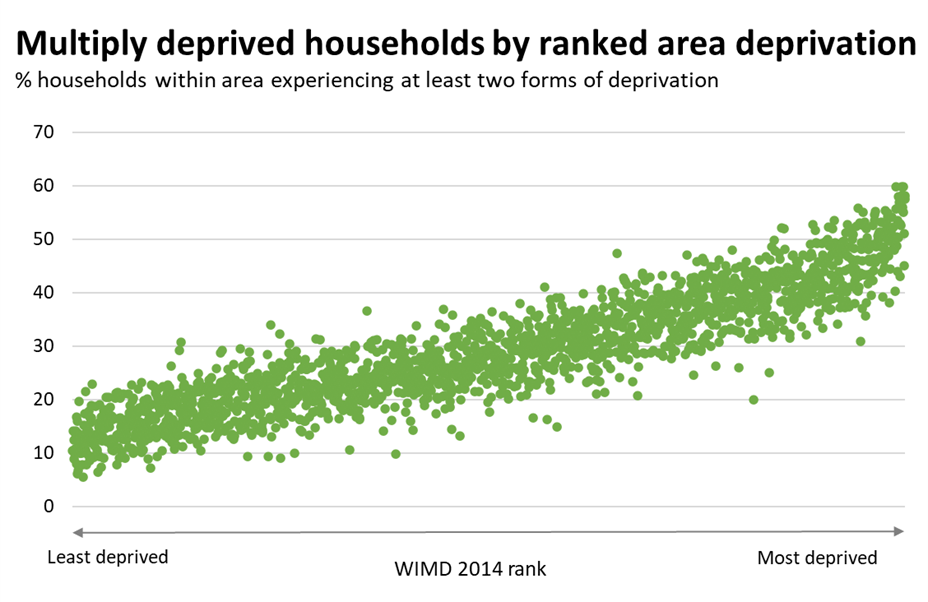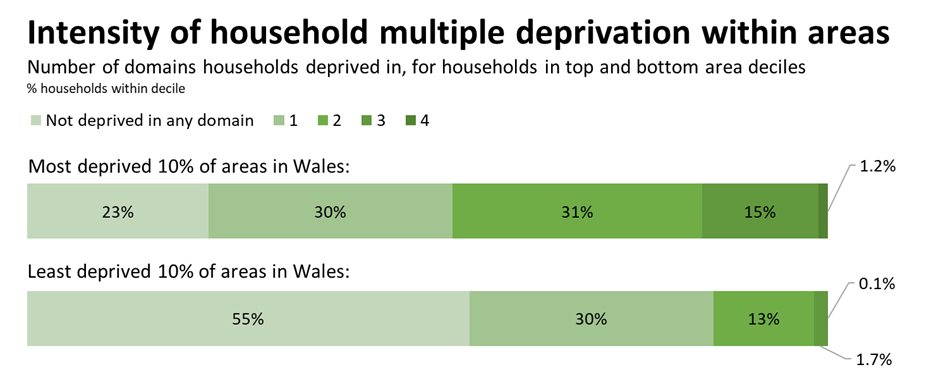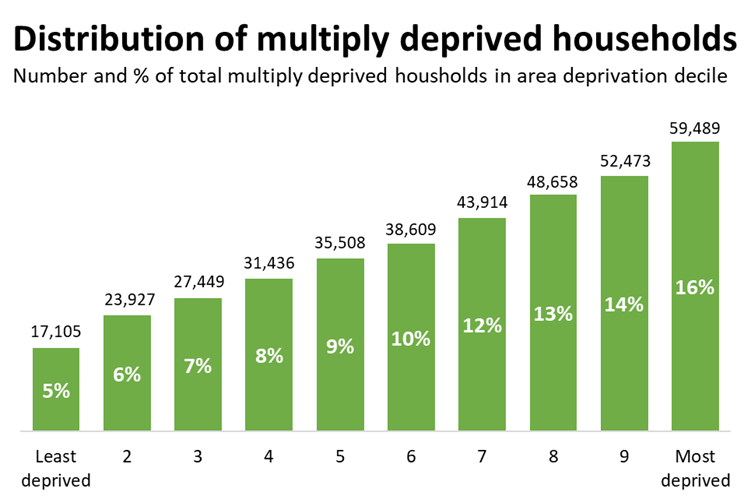The Welsh Index of Multiple Deprivation (WIMD) is the Welsh Government’s official measure of relative (‘ranked’) deprivation for small areas in Wales. WIMD is used by government and other organisations to target services to address social disadvantage. For example, as part of their programme to increase access to higher education, the Higher Education Funding Council for Wales prioritise people living in the top 40% most deprived areas in Wales.
However, use of area-based measures of deprivation to target resources aimed at addressing household or individual level disadvantage may be inefficient. Not all households experiencing multiple deprivation live in deprived areas; whilst some deprived areas may contain a substantial proportion of households who are less deprived. This blog post reports on the overlap of area-based (WIMD) and household experiences of multiple deprivation using Open Data.
A measure of household level multiple deprivation, created by the Office for National Statistics using Census 2011 data, was linked to the WIMD conducted in 2014. Household multiple deprivation relates to four domains—employment, education, health, housing—and households with two or more deprivation characteristics are referred to as ‘multiply deprived’ in this blog post. WIMD is treated either as a rank of small areas, from least to most deprived, or grouped into deciles.
Areas that were relatively more deprived in terms of their WIMD rank were found to have a higher proportion of households experiencing multiple deprivation. Of households ranked in the 10% most deprived areas in Wales, 46% were multiply deprived, compared to 15% of households in the 10% least deprived areas. The proportion of households deprived in all four domains, ie, experiencing the most extreme form of household-level multiple deprivation, was higher in more deprived areas—1.2% of households in the 10% most deprived areas compared to 0.1% in the 10% least deprived areas.


Resources are often targeted at the most deprived areas indicated by the WIMD. Though the definition of ‘most deprived’ varies, it rarely includes areas ranked below the 50% most deprived. As such, 36% of multiply deprived households in Wales, equating to roughly 135,000 households, would be missed from services targeted using the WIMD.

These findings suggest there is some degree of association between multiple deprivation at the area and household-level. However, broadly targeting households based on their area of residence has the potential to further disadvantage the already disadvantaged. And this problem is not alleviated by simply switching the level of measuring multiple deprivation from areas to households.
Accumulating data about individual households to identify and target them for intervention is ethically problematic: it makes manifest public fears around ‘big brother’ and increasing surveillance in society. A measure of household deprivation would therefore have to be aggregated to a higher spatial level so that no one single household could be identified in the data. However, in aggregating data, the risk of excluding households not in deprived areas becomes a problem again.
A potential trade-off may exist between increased accuracy in targeting interventions based on the intensity of deprivations faced by households/people in an area, and the fallacy of assuming that all people in an area share the same level of deprivation. Further research is needed to explore this trade-off, and to estimate the improvement to targeting of services that household or individual-level measures of multiple deprivation enable.
Image Credit: Teamjackson via iStock

